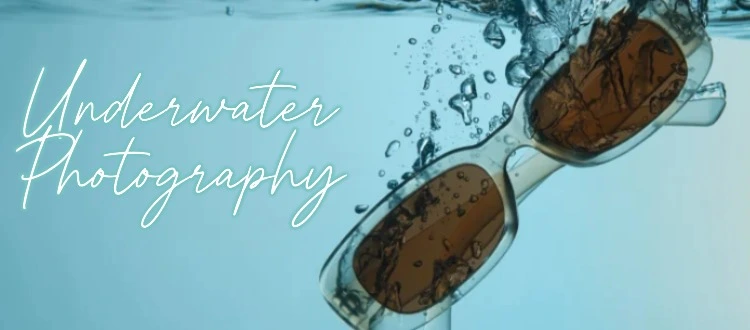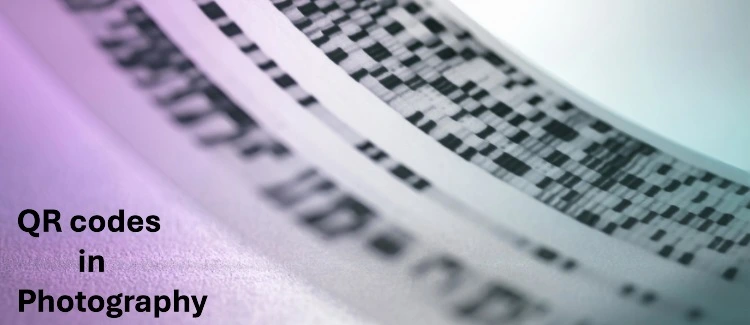Theodore Lowe, Ap #867-859
Sit Rd, Azusa New York
Find us here
The Challenges of Shooting Underwater: Overcoming Hurdles

But soon, you realize it's not as simple as it seems. Shooting underwater comes with its own set of challenges that can test your skills and patience. As you navigate the depths, you're faced with unique hurdles that can make or break your photography experience.
You'll discover the common obstacles photographers encounter beneath the waves and learn how to overcome them. Dive deeper to uncover the secrets that will transform your underwater photography from frustrating to flawless.
Equipment Essentials
Diving into underwater photography presents unique challenges. Equipment is the cornerstone of success. For clear shots and vibrant images, choose wisely. Each piece of gear serves a crucial function. From cameras to lighting, every component matters. Let's explore the essentials for your underwater adventure.
Choosing The Right Camera
An underwater camera must withstand water pressure. Compact cameras are a popular choice. They are easy to handle underwater. DSLR and mirrorless cameras offer superior image quality. Consider the type of photography you aim to capture. Fast-moving subjects may require high-speed shooting. Keep camera weight in mind, as it affects buoyancy.
Selecting Waterproof Housings
A waterproof housing protects your camera. Each camera model needs a specific housing. Ensure it is a perfect fit. Look for durable materials like polycarbonate. Test the housing before diving. Check for any leaks or cracks. Some housings offer additional controls. They give you more flexibility underwater.
Lighting Solutions
Lighting is crucial in underwater photography. Water absorbs light, reducing visibility. Use external strobes for better illumination. LED lights are another great option. They provide consistent lighting. Adjust lighting to reduce backscatter. Backscatter occurs when particles reflect light. Experiment with angles to find the best light. Proper lighting highlights vibrant underwater colors.
Technical Difficulties
Shooting underwater presents unique technical challenges that demand precision and skill. The environment is vastly different from terrestrial settings, affecting camera operations. Water can distort images, complicate focus, and alter colors. Light behaves differently underwater, impacting how photos turn out. Photographers must adapt to these conditions for quality shots.
Maintaining Focus
Focus is critical in underwater photography. Water can warp images, making subjects appear blurry. The currents may shift the camera's position, affecting focus. Autofocus systems often struggle to lock onto subjects. Manual focus can help but requires steady hands. The constant motion of water adds to the difficulty.
Achieving Color Accuracy
Underwater colors differ from those on land. Water filters out red hues, leaving a blue-green cast. This shift can wash out vibrant colors. Correcting color involves using filters or editing software. Photographers often adjust white balance to restore natural hues. This step is crucial for capturing true-to-life images.
Handling Motion Blur
Motion blur is common underwater. Ocean currents and moving subjects contribute to this issue. Slow shutter speeds can lead to blurred images. Fast-moving marine life requires quick adjustments. Increasing ISO settings helps but may introduce noise. Stabilization equipment can minimize motion effects. Balancing these factors is key to sharp photos.
Environmental Obstacles
Underwater filming presents unique challenges like limited visibility and fluctuating lighting conditions. Equipment handling becomes tricky due to water pressure and buoyancy. Marine life adds unpredictability, requiring patience and adaptability from filmmakers.
Diving into the world of underwater photography presents a unique set of environmental obstacles. The beauty beneath the waves is undeniable, but capturing it on camera requires navigating through challenges that nature throws your way. Understanding these environmental factors is crucial to improving your underwater photography skills and ensuring your safety.
Coping With Water Pressure
Water pressure is an invisible force that can greatly impact your underwater photography experience. As you descend, the pressure increases, which can affect both your equipment and your ability to stay comfortable. Make sure your camera gear is rated for the depths you intend to explore. Your body will also feel the squeeze, especially in your ears and sinuses. Equalize frequently as you descend to avoid discomfort. Have you ever felt that sharp pain in your ears? That's your body telling you to adjust to the changing pressure.
Dealing With Currents
Currents can be both a blessing and a curse when shooting underwater. While they can bring vibrant marine life into your frame, they can also sweep you off course. Being aware of the current patterns in your chosen dive spot helps you plan your shots more effectively. Always secure yourself when possible, and keep a firm grip on your camera. Have you ever tried to hold your position while the ocean tugs at you? It’s like trying to keep a steady hand in a moving car.
Visibility Challenges
Visibility underwater is crucial for good photos. Many things change what you see through your lens. These include plankton blooms and sand stirred by currents. The time of day also makes a big difference.Planning your dive when conditions are best can help. Your eyes may get used to murky water. However, your camera lens will not adjust in the same way.Have you looked at your photos and seen unexpected particles? This shows that nature is not always predictable. Learning to deal with these environmental challenges is important. It's about working with nature, not against it.Understanding these factors is key. This is true for every diver, whether you are experienced or a beginner. It can turn a normal dive into a great photo chance. Think about how environmental obstacles are affecting your pictures. Fixing these issues could lead to your next amazing underwater photo.
Safety Precautions
Underwater photography provides stunning visuals and unique experiences. However, it also brings a specific set of challenges. The most crucial aspect is safety.
It is vital to ensure the safety of both the photographer and the subject. This requires following specific protocols and precautions. We will now explore the essential safety measures for this kind of shooting.
Diving Protocols
Following diving protocols is crucial for safe underwater shoots. Always dive with a buddy. This ensures assistance in case of emergencies. Check your dive plan before entering the water. Know the depth and conditions of the location. Monitor your air supply regularly. Never push your limits or dive beyond your certification level.
Equipment Safety Checks
Equipment safety is paramount for underwater photography. Inspect your gear before each dive. Check the camera housing for any leaks. Ensure all seals are clean and intact. Test your scuba gear thoroughly. Confirm that your mask fits properly. Faulty equipment can lead to dangerous situations. Regular maintenance is essential to avoid mishaps.
Emergency Procedures
Having a clear emergency plan is essential. Practice emergency procedures with your dive buddy. Know how to handle equipment failures underwater. Be aware of the nearest emergency exit points. Understand how to perform basic first aid if needed. Keep communication devices within reach. Quick action can prevent minor issues from escalating.
Creative Techniques
Underwater photography offers a world of creative possibilities. The ocean's vast, vibrant environment presents unique challenges and opportunities. Photographers explore various techniques to capture mesmerizing images. These techniques help convey the beauty and mystery of life beneath the waves. Let's dive into three essential techniques that enhance underwater photography.
Capturing Unique Angles
Underwater, angles change the entire perspective. Photographers experiment with different positions. Shooting upwards highlights the surface and sunlight. This technique often adds drama to the scene. Shooting from below makes subjects appear larger and more dynamic. Trying side angles can capture the movement of water. Unique angles often reveal unseen aspects of marine life.
Utilizing Natural Light
Natural light varies greatly underwater. The deeper you go, the less light there is. Photographers often shoot in shallow waters for more light. Early morning or late afternoon provides soft, golden hues. This time enhances colors and adds warmth to images. Photographers also use light rays piercing the water for dramatic effects. Timing and positioning are key to using natural light effectively.
Incorporating Marine Life
Marine life adds life and interest to photos. Patiently waiting for the right moment is crucial. Photographers capture creatures in their natural habitat. This often requires stealth and patience. Creating a sense of interaction between marine life and the environment makes images compelling. Including diverse marine species brings vibrant colors and textures. This adds depth and intrigue to the photographs.
Conclusion
Shooting underwater brings unique challenges. Lighting changes constantly. Water blurs images. Equipment needs extra care. Safety is essential. Creatives face obstacles in capturing beauty below. Mastering techniques takes time. Patience is key. Photographers must adapt quickly. Practice improves skills. Every dive offers a new experience.
Underwater photography rewards those who persist. A fascinating world awaits beneath the waves. Each challenge is an opportunity to learn. Success comes with dedication and effort. Dive into the adventure and capture stunning underwater scenes. Remember, beauty lies in the depths.
Related blog posts
QR Codes in Photography: Unlocking Creative Possibilities
Imagine transforming your photography into an interactive experience that captivates your audience. QR codes are revolutionizing the way we share and engage with images.


